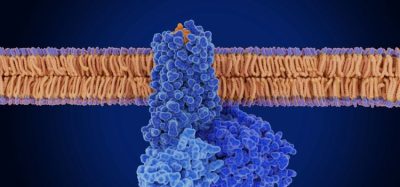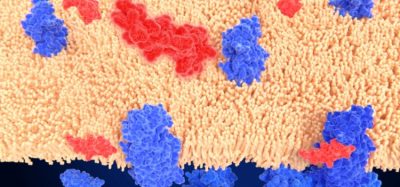Roche’s medicine Avastin plus chemotherapy improved survival in women with advanced cervical cancer, compared to chemotherapy alone
Posted: 2 June 2013 | | No comments yet
Results of study GOG240…
Roche (SIX: RO, ROG; OTCQX: RHHBY) today announced the results of a large, independent study (GOG240) sponsored by the US National Cancer Institute (NCI) and conducted by the Gynecologic Oncology Group (GOG), which showed that the addition of Avastin (bevacizumab) to chemotherapy (paclitaxel and cisplatin or paclitaxel and topotecan) extended the lives of women with advanced cervical cancer, compared to chemotherapy alone. The study met its primary endpoint of improving overall survival with a statistically significant 29 percent reduction in the risk of death for women who received Avastin plus chemotherapy compared to those who received chemotherapy alone (HR=0.71, p=0.0035).
Women who received Avastin plus chemotherapy lived a median of 3.7 months longer compared to those who received chemotherapy alone; the median overall survival (OS) was 17 months with Avastin plus chemotherapy compared to 13.3 for chemotherapy alone. No new safety signals related to Avastin were observed and overall safety was consistent with that seen in previous pivotal studies of Avastin across different tumour types.
“Worldwide, cervical cancer is the third most common cancer in women, and those who have an advanced form of this cancer need new medicines”, said Hal Barron, M.D., chief medical officer and head, Global Product Development. “We’d like to thank the GOG for their leadership and the NCI for their support of the study. We plan to discuss these encouraging data with regulatory authorities.”
It is estimated that there are more than half a million cases of cervical cancer worldwide each year,1 with approximately 85% of those in developing countries.1 Besides effective treatment, it is also critical that more women have access to vaccination against human papilloma virus (HPV; the cause of the vast majority of cervical cancers) and to screening for precancerous lesions. These approaches can prevent women from developing advanced clinical disease.
The GOG240 data will be presented today in the plenary session of the 49th Annual Meeting of the American Society of Clinical Oncology (ASCO) by Dr. Krishnansu Sujata Tewari, University of California, Irvine Medical Center (Abstract 3, Sunday, June 2, 1:00 PM CDT).
GOG240 study results
- Avastin in combination with chemotherapy reduced the risk of death by 29 percent compared to chemotherapy alone (HR=0.71, p=0.0035).
- Median overall survival was 17.0 months for women who received Avastin plus chemotherapy compared to 13.3 months for chemotherapy alone.
- Women who received Avastin plus chemotherapy experienced a 33 percent reduction in the risk of disease worsening or death (progression-free survival; PFS) compared to chemotherapy alone (median PFS: 8.2 months vs. 5.9 months; HR=0.67, p<0.002)
- Avastin plus chemotherapy shrank more tumours (response rate) than chemotherapy alone (48% versus 36%, respectively, p=0.0078).
- No new safety signals were observed and the overall safety was consistent with that seen in previous pivotal studies of Avastin across tumour types
About the GOG240 study
GOG240 is an independent, National Cancer Institute (NCI) sponsored phase III trial assessing the efficacy and safety profile of Avastin plus chemotherapy (paclitaxel and cisplatin or paclitaxel and topotecan) in women with advanced (stage IVb) cervical cancer, or cervical cancer that persisted or recurred after standard treatment. The trial was supported by Roche. The primary endpoint of the study was OS. A total of 452 women in the United States and Spain were randomised to one of four treatment arms:
- Paclitaxel and cisplatin.
- Paclitaxel, cisplatin and Avastin (15 mg/kg every three weeks).
- Paclitaxel and topotecan.
- Paclitaxel, topotecan and Avastin (15 mg/kg every three weeks).
About the Gynecologic Oncology Group (GOG)
The Gynecologic Oncology Group (GOG) is a non-profit international organisation with the purpose of promoting excellence in the quality and integrity of clinical and basic scientific research in the field of gynecologic malignancies. The Group is committed to maintaining the highest standards in clinical trials development, execution, analysis and distribution of results. Continuous evaluation of their processes is utilised in order to constantly improve the quality of patient care. To promote this mission, the GOG receives support from the National Cancer Institute (NCI) of the National Institutes for Health (NIH).
About cervical cancer
Cervical cancer is caused when cells of the cervix, the lower part of the uterus, become cancerous. According to the American Cancer Society, cervical cancer can often be found early and sometimes even be prevented entirely if detected early by having regular Pap / smear tests. Almost all cases of cervical cancer (99.7%) are caused by human papilloma viruses (HPV).2 HPV is a group of more than 150 related viruses, many of which can be easily spread during sexual intercourse. Not all HPVs cause cancer; however two in particular – HPV types 16 and 18 – are responsible for about 70% of cervical cancers.3 It is critical that more women have access to vaccination against HPV and to screening technologies. This approach can prevent them from developing the deadly disease. There is a dramatic difference in five year survival rates between early and advanced cervical cancer. When localised, nine out of 10 women will live for five years following diagnosis; when the disease is advanced (metastatic), this drops to below two in ten women.4 It is estimated that there are more than half a million cases of cervical cancer worldwide each year,1 with approximately 85% of those in developing countries.1 Cervical cancer is the third most common cancer in women,1 and one of the leading causes of cancer death in women worldwide, with approximately 275,000 women dying yearly.1
About Avastin – over 9 years of transforming cancer care
With the initial approval in the USA for advanced colorectal cancer in 2004, Avastin became the first anti-angiogenic therapy made widely available for the treatment of patients with an advanced cancer.
Today, Avastin is continuing to transform cancer care through its proven survival benefit (overall survival and/or progression free survival) across several types of cancer. Avastin is approved in Europe for the treatment of advanced stages of breast cancer, colorectal cancer, non-small cell lung cancer, kidney cancer and ovarian cancer, and is available in the US for the treatment of colorectal cancer, non-small cell lung cancer and kidney cancer. In addition, Avastin is approved in the US and over 60 other countries worldwide for the treatment of patients with progressive glioblastoma following prior therapy. Avastin is approved in Japan for the treatment of the advanced stages of colorectal, non-small cell lung cancer and breast cancer. Avastin is the only anti-angiogenic therapy available for the treatment of these numerous advanced cancer types, which collectively cause over 2.5 million deaths each year.
Avastin has made anti-angiogenic therapy a fundamental pillar of cancer treatment today. Over one million patients have been treated with Avastin so far. A comprehensive clinical programme with more than 500 ongoing clinical trials is investigating the use of Avastin in over 50 tumour types.
About Avastin – mode of action
An independent blood supply is critical for a tumour to grow beyond a certain size (2mm) and spread (metastasise) to other parts of the body. Tumours develop their own blood supply in a process called angiogenesis by releasing vascular endothelial growth factor (VEGF) – a key driver for tumour growth. Avastin is an antibody that precisely targets and inhibits VEGF. Precise VEGF inhibition by Avastin allows it to be combined effectively with a broad range of chemotherapies and other anti-cancer treatments with limited additional impact on the side effects of these therapies.
References
- World Health Organization. GLOBOCAN 2008. Available online: http://globocan.iarc.fr
- Beaudenon S and Huibregtse J. HPV E6, E6AP and cervical cancer. BMC Biochem. 2008; 9(Suppl 1): S4.
- National Cancer Institute. HPV and cervical cancer. Available online: http://www.cancer.gov/cancertopics/factsheet/Risk/HPV
- Howlader N, Noone AM, Krapcho M, Neyman N, Aminou R, Altekruse SF, Kosary CL, Ruhl J, Tatalovich Z, Cho H, Mariotto A, Eisner MP, Lewis DR, Chen HS, Feuer EJ, Cronin KA (eds). SEER Cancer Statistics Review, 1975-2009 (Vintage 2009 Populations), National Cancer Institute. Bethesda, MD, http://seer.cancer.gov/csr/1975_2009_pops09/ based on November 2011 SEER data submission, posted to the SEER web site, 2012









